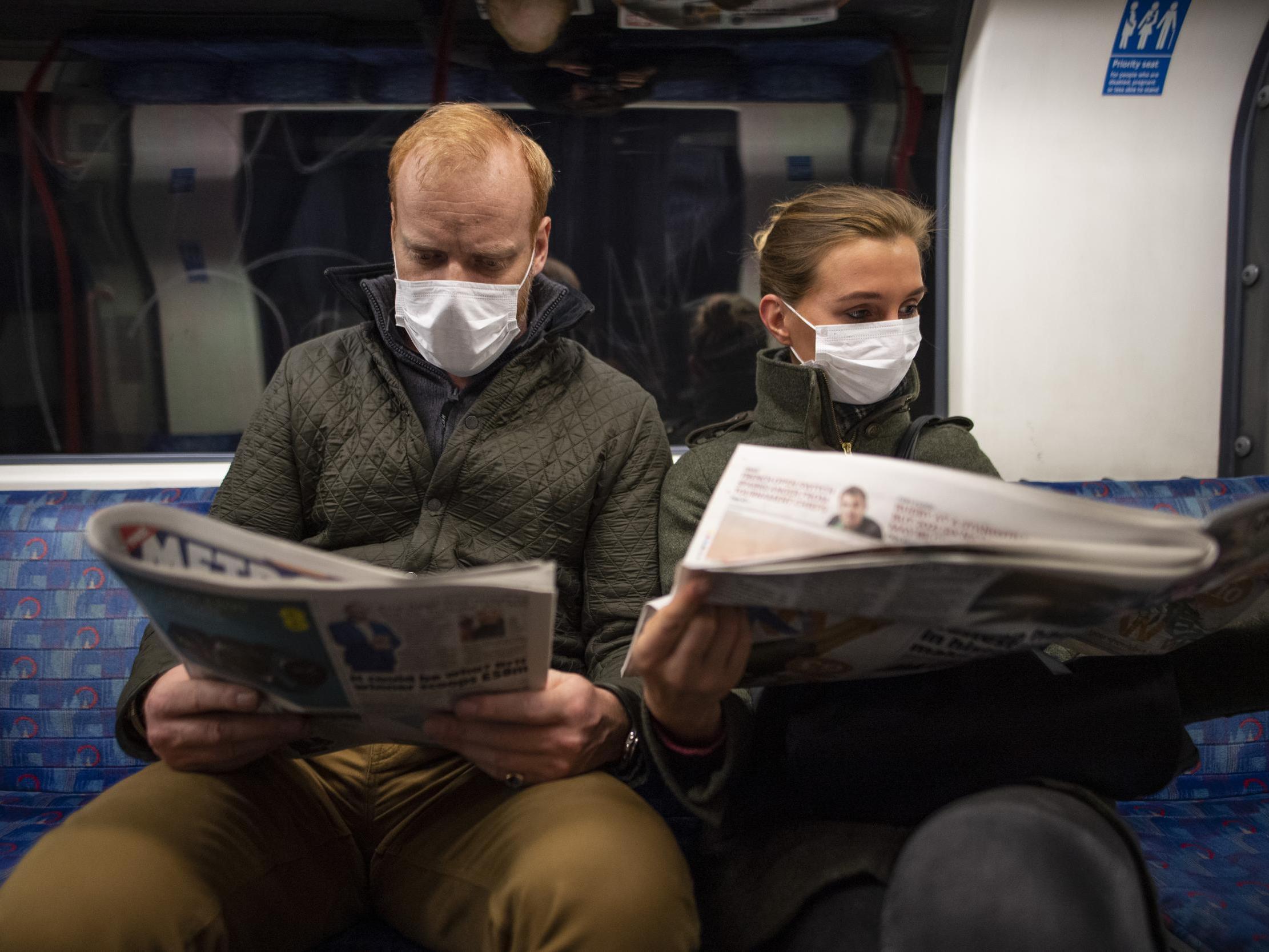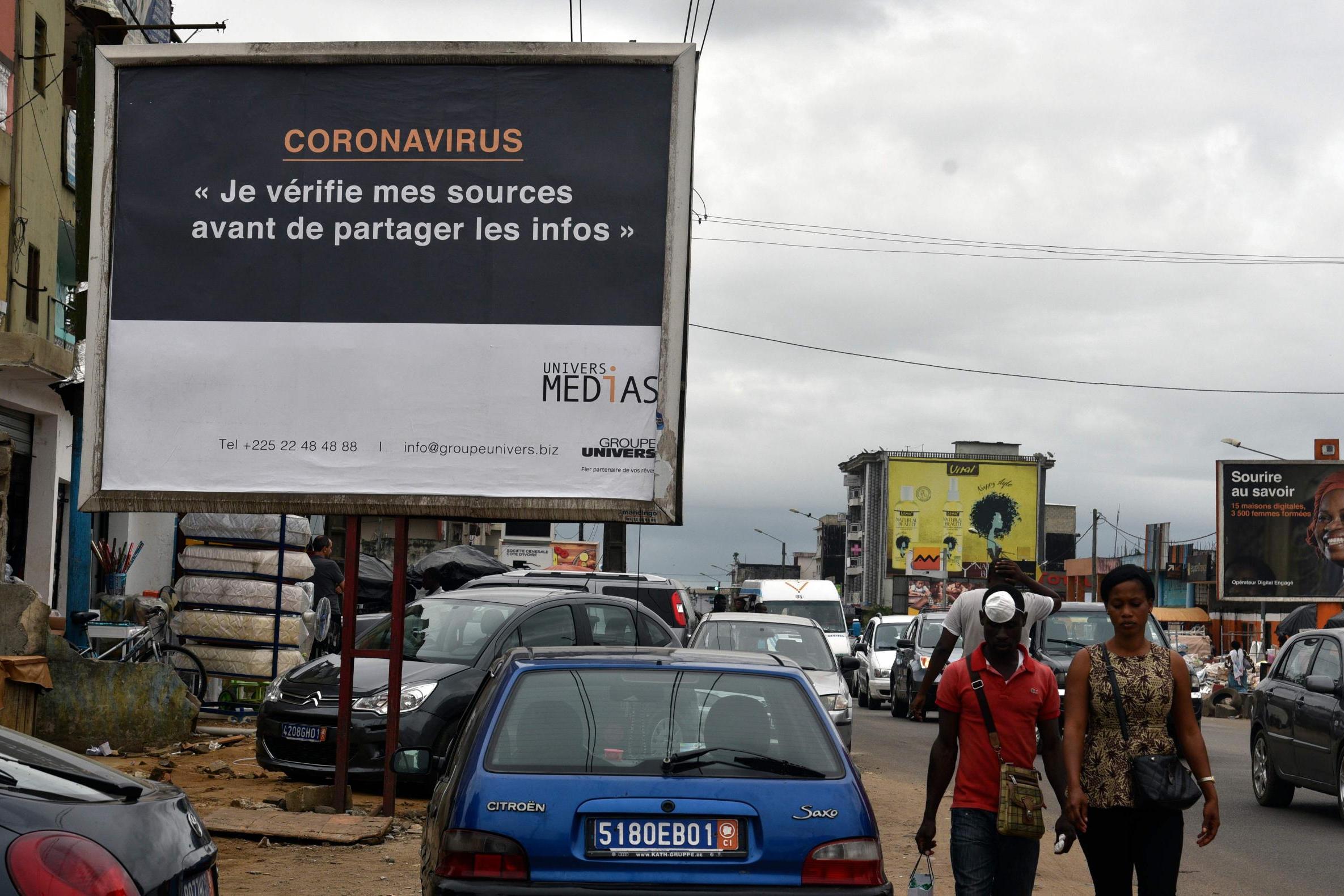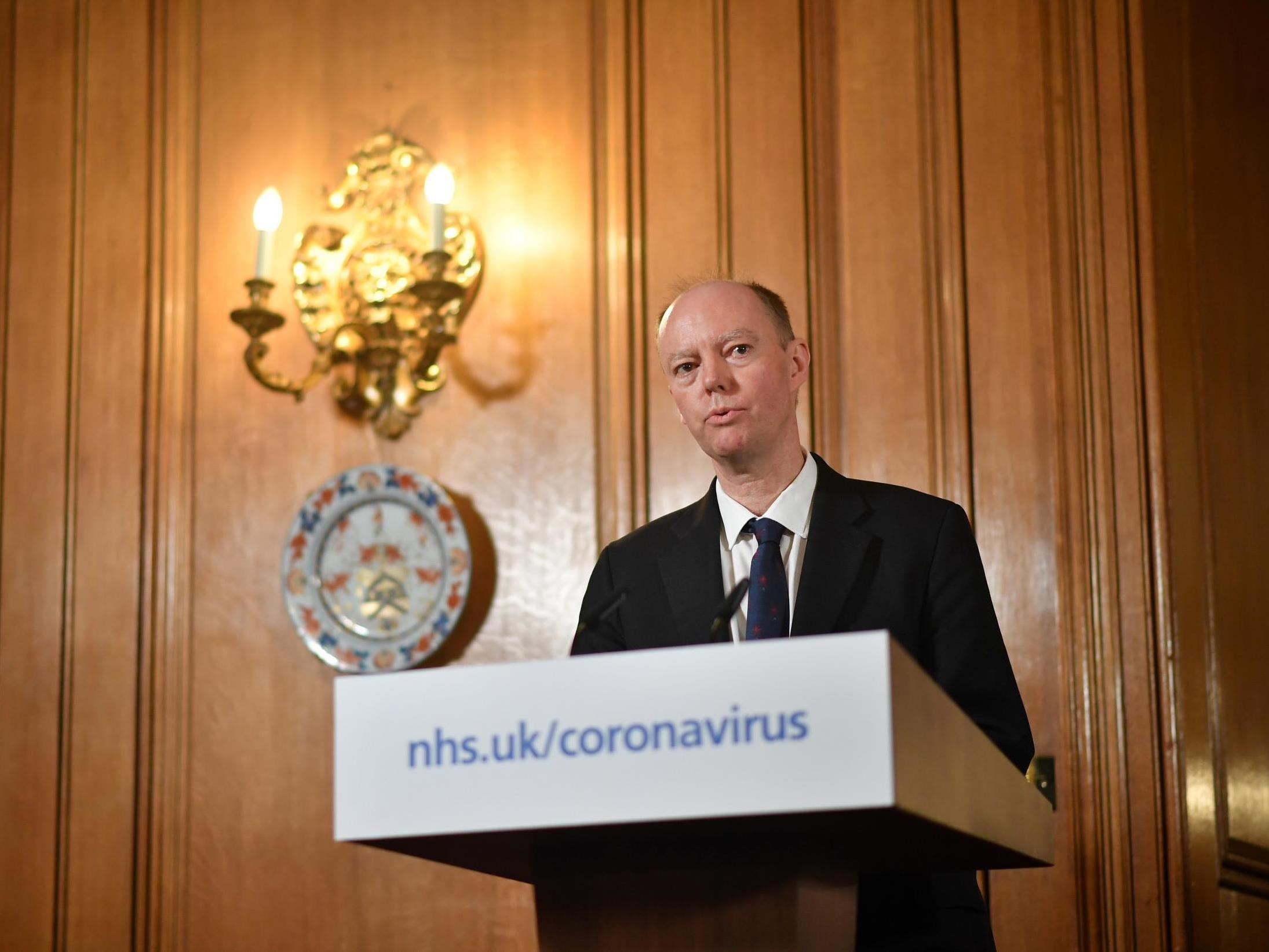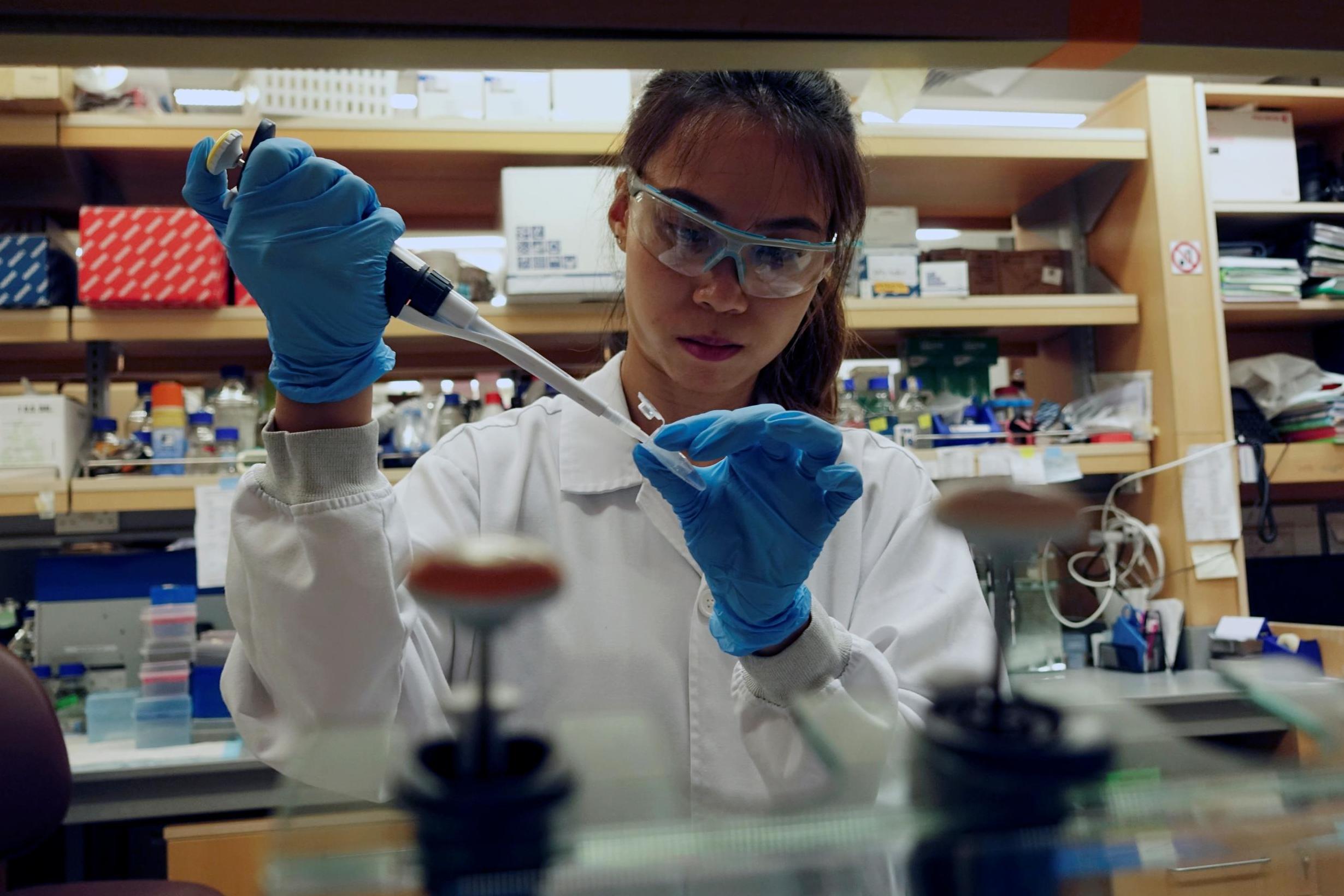A likely story: How to tell the difference between fake news and science
‘The good thing about science is that it’s true whether or not you believe in it’ – Mick O’Hare tries to sift through the urban myths flooding the digital plane


Ibuprofen. Should you avoid it? A debunked rumour running amok on social media announced that healthy young people who took it while they had symptoms of Covid-19 were all dead within hours. But where did the story come from? In any case how could ibuprofen exacerbate Covid-19? And what about holding your breath or drinking cow urine?
The urban myth, of course, has a long history. In the old days it was the bloke down the pub who scared the hell out of you with the story of his mate’s mate who knew boa constrictors dwelled in the sewers. Latterly it was office colleagues at the water cooler telling you aluminium saucepans gave you Alzheimer’s. You weren’t sure, even back then, but now it’s all over Twitter, and everybody can hear it. Getting on for two-thirds of the world’s population now access news online. In this age of total planetary interconnection how do you sift what’s real from what isn’t?
It is science that will inform us in the weeks and months to come as Covid-19 runs its course. But with so much information out there, and with the ability for it to be passed to the other side of the planet in seconds, who or what can you trust? It’s not easy. Not everybody has a science background (and even if they do, we all know how much experts are distrusted by even government ministers).
But most people would like to believe, rightly or wrongly, that they are rational. Which is a starting point. And as astrophysicist and science author Neil deGrasse Tyson declared: “The good thing about science is that it’s true whether or not you believe in it.” It’s a quote worth hanging onto in a world where Donald Trump could tweet that germs came from Germany and within seconds there would be followers wondering whether they should cancel their visit to Berlin.

Well let’s hoist the red flags first. Is the story you are reading on social media (or indeed anywhere) verifiable? That’s not the number of retweets it has received but whether the source is credible. Some people, of course, would not even trust ostensibly reputable organisations such as the BBC, The New York Times or The Lancet but, presuming you haven’t already suspended reason for life as a conspiracy theorist, is the source or the writer of the story likely to be credible to those who understand the science?
Beware of confirmation bias. People are more likely to believe stories that conform to their world view and dismiss those that do not
Any journalist covering any story – scientific or not – should be in contact with those who carried out the research or witnessed the phenomenon. There should be no hearsay. And while the likes of the BBC or Reuters might not meet academic citation standards, they should be reporting on publications and institutions that do. Typical of the kind of stories that fall into the unverifiable category are those that appear on any number of social media purporting to be from a “mother” or “concerned grandson” lending an emotional frisson to the narrative.
German language WhatsApp had one such recently from a “young mother” claiming that a laboratory in Vienna had found that the majority of Covid-19 deaths in Italy were of people who had taken ibuprofen. There was no checkable source, let alone from any research laboratory in Vienna, but once such stories gain a foothold we end up in the same territory as that inhabited by anti-vaxxers – a potential global health threat being created by people who believe they are preventing one.
Secondly, beware of confirmation bias. People are more likely to believe stories that conform to their world view and dismiss those that do not. If you hear a rumour that Jeremy Corbyn has invited Kim Jong-un to dinner and you are not kindly disposed to the soon-to-be-replaced Labour leader, you would be more likely to believe it than might one of his supporters. Seeing what you want to see is a natural human inclination, so to remain rational you need to develop a personal filter.

Philosopher Stephen Law, editor of the journal Think, warned us of getting sucked into “intellectual black holes” in his 2011 book Believing Bullshit. “These are belief systems that draw people in and hold them captive so they become willing slaves of claptrap,” he told New Scientist. You’ll even find people claiming that factually accurate stories are themselves fake because they disagree with them. Again, the source of the story is vital.
Be aware of the publisher’s point of view – most publications take an editorial line. It’s a broad exemplar but it demonstrates the point: we know The Daily Telegraph will be more sympathetic to the Conservative government, while The Guardian would be more likely to have liberal tendencies. Now this doesn’t mean their news is in any way fake, but it’s likely you already add your own personal filter to the thrust of their stories to counter for this. It’s through a similar prism that you should approach any science story.
A guest on US televangelist Jim Bakker’s show claimed drinking colloidal silver could kill Covid-19. It couldn’t but it could kill the consumer
This applies even more, perhaps, to news online. It’s often worth a visit to a dependable fact-checking website too, such as snopes.com or fullfact.org. Nobody “knows” everything but these sites hold great store by making every attempt to verify stories and claims.
And just how did that article arrive in your inbox in the first place? Look at the incorrect and unsubstantiated rumours that swirled around the onset of Covid-19, such as those saying you should drink hot water or avoid ice cream to protect yourself from it, or that a runny nose means you don’t have it. And some of the untruths are potentially dangerous. A guest on US televangelist Jim Bakker’s show claimed drinking colloidal silver could kill Covid-19. It couldn’t but it could kill the consumer.
Likewise eating garlic was supposed to prevent infection. Harmless you might think, even if untrue, but a woman in China who ate 1.5 kilos of the stuff was hospitalised with an inflamed throat. So it’s important to know where such stories originate. Check out the URL and specifically the domain name if somebody has sent you a link. Is it even the publication it is purporting to be? For instance, thelancet.com (the real website for The Lancet) isn’t much different to thelancet.com.co (a made-up site for this feature).

If a story mentions a publication, check that publication really exists. A lot of the negative claims made in the last US presidential election about Hillary Clinton’s emails cited The Denver Guardian as a source. This publication does not exist.
And if you do think the story might be credible then read it carefully. Does it have a lot of spelling mistakes? Dreadful or overwrought punctuation????!!! Or does it make a stupid claim? One obvious example in this category was the 2017 report that went viral announcing that Hurricane Irma, a category six hurricane, was so strong it could flatten entire cities. There are no category six hurricanes. The quality of the writing is one red flag that should stop you in your tracks.
Also with science stories, check out who is quoted directly in them. If nobody is then you can pretty much dismiss the story outright. Credible news – especially science news – organisations will always quote the researchers and protagonists. At least try to find the story elsewhere online to see if people of credibility are quoted. And if they are but it’s somebody you have never heard of, search for them independently online.
Some fake stories will, of course, include fake quotes to make them appear trustworthy but if, for example, we hear new information from a credible individual such as England’s chief medical office Chris Whitty, it will almost certainly be quoted across multiple verifiable news sites and academic publications online rather than in just one place.
Of course some stories are deliberately faked – rather than merely unsubstantiated social media rumour – deploying bots to amplify their message, such as those created by outside agents from hostile nations who may wish to interfere with the government and political processes of another state. These are possibly more difficult to spot but tend to have a specific purpose such as spreading discord or uncertainty. Ask yourself: why was the story written? If it was clearly to provoke anger or fear then that should be a big warning signal.
News – especially science news – should be presented rationally and dispassionately, intended to inform rather than inflame. That critical mindset is important here – again, can the story be verified via any mainstream news organisation?

Lastly, if there’s a picture with the story, check it’s real. It’s often very difficult to tell with doctored images because of the sophisticated software involved, but poor shadows or distorted lines are often a clue. And again, is any reputable or academic organisation using the image elsewhere? The same goes for graphs, for example, showing deaths from anything from Covid-19 to the number of koalas killed in the Australian bushfires. They should have a source noted. If they do, check it out. If they don’t, beware.
Common sense plays a major role in all of the above, of course. If it sounds improbable it most likely is: drinking water every 15 minutes flushes out the coronavirus, for example (it doesn’t). Which isn’t to say that improbable things don’t happen, just put them through the filters mentioned above, and apply the principle of Occam’s Razor: the simplest solution is most likely the right one.
Some stories are deliberately faked – rather than merely unsubstantiated social media rumour – deploying bots to amplify their message, such as those created by hostile nations
But what happens when trustworthy – such as the BBC or New Scientist – doesn’t always mean correct? Such organisations would, for example, have accurately reported the onset of the MMR vaccine story, leading to people becoming concerned that their children might develop autism or Crohn’s disease if they received the vaccine. This was, of course, later discredited but at the onset of the story reputable science publications would have reported the earlier, eventually invalidated, findings accurately and as they appeared at the time.
Truth is difficult, but make sure you keep abreast of the story. It is important to understand that science is an ongoing process with each theory evolving to adapt to the available evidence, but at least if the source is a reliable one you will be able to discover the current thinking based on the latest evidence. And if peer-reviewed journals are too detailed and jargon-ridden many more accessible sources are around to disseminate the information for you.
Look for established but serious consumer publications in both print and online. Repeatable and demonstrable results are the touchstones of science and in the end the MMR claims were disproved and exposed because of those repeatable and demonstrable results (and questionable practices in the original studies).

Beware glib references, however. For example, the Daily Mail became so obsessed with which inanimate objects (bacon, sugar, energy saving light bulbs) in the world could cause cancer and which could stop its onset (laughter, fresh fruit, Brexit) that a satirical blog known as The Daily Mail Oncological Ontology Project was set up to list all the things the newspaper had deemed carcinogenic and those which weren’t.
But beneath the light-heartedness there was a methological issue with the Mail’s claims. They were nearly all based on single-reference sources, inaccurate extrapolation or shallow interpretation of the facts or, for instance, that research showing a cancer forming in mice who ate blue cheese immediately translated into instant death for humans who ate blue cheese.
Science depends upon repeatable experimentation and evidence before it can declare a specific outcome. This can, of course, lead to “disputes” over whether such things as climate change are happening (it is, yet climate scientists were honest enough to point out that a single hot summer is weather and not necessarily attributable to climate change). But because somebody disputes something does not necessarily mean both sides are intellectually credible. For example if a rogue mathematician insists that 2 + 2 = 5 it might be interesting to speak to her to find out why she goes against the orthodoxy, but this does not mean that every time a textbook claims 2 + 2 = 4 equal credence should be given to the rogue opinion.
So what of conspiracy theories? Was coronavirus really created in a Chinese (or American) lab? Well, almost certainly not but most claims of this nature tend to contain the seeds of their own implausibility. Take steps to check what at first sight might seem conceivable.
A headline telling us that we have a 60 per cent increased chance of dying from cancer if we eat blue cheese does not mean that 60 per cent of us will die from eating blue cheese
One only needs to study a couple of the allegations made by those who believe the moon landings were faked. There are no stars in the photographs the astronauts took on the moon they have argued, and there is no moon dust on the lunar module’s landing pads. There are no stars because a rapid-exposure camera cannot detect such tiny light points as stars (go outside on a clear night and try to photograph stars with a fast shutter speed), and there is no dust on the landing pads because it is all blown away as the module lands and, because there is no atmosphere on the moon, it cannot swirl around and instead falls directly to the ground away from the lander. Had there been stars or dust this might have been evidence of fakery, but their absence reinforces the evidence of the landings rather than mitigates against it. Always look beyond the simplistic.
And of course it’s the same with statistics. A headline telling us that we have a 60 per cent increased chance of dying from cancer if we eat blue cheese does not mean that 60 per cent of us will die from eating blue cheese. It means the chances increase 60 per cent from what might be a very, very low base level and are possibly statistically negligible, and not even worth the headline at all. Currently statistics are at the heart of the government’s response to coronavirus and it was the projection of as many as 500,000 deaths that led it to change tack rapidly last week.

But what should a reader do when faced with the news, earlier this week, that preliminary research at Oxford University suggests that possibly half of the UK’s population has been infected by the virus, most being asymptomatic, and that the fabled “herd immunity” was a likely outcome, while government advisors at Imperial College London remain sceptical and are advising policy sticks to their model of still-limited infection? This is an example of science developing alongside the stories it is creating. Nobody yet knows the reality. Only more research can give us the genuine picture. Both are theoretical models, neither is “fake” but only one will be true. Science attempts to deal with absolutes but frequently cannot. Readers can only stay atop the story until more evidence emerges.
The fundamental cause of the trouble in the modern world today is that the stupid are cocksure while the intelligent are full of doubt
Of course, in the case of the current coronavirus time is short, and interpreting this “new” science will sometimes involve inference and making best-guess judgments until our knowledge of the epidemiology becomes more concrete. This is why the government is having to rely on statistical modelling before announcing what measures it is taking. Unfortunately some science, especially at its onset, needs to be hesitant and may seem confused. But even so these decisions will – or should – still be informed by the best evidence available.
And the ibuprofen story? Well the grisly rumours of deaths weren’t real, but nonetheless the World Health Organisation and the NHS did clarify that some non-steroidal anti-inflammatory drugs such as ibuprofen can cause breathing difficulties in some groups of people, such as those with asthma or others with respiratory problems.
But having said that Professor Parastou Donyai of the University of Reading and a member of the Royal Pharmaceutical Society told the BBC: “I have not seen any scientific evidence that clearly shows a totally healthy 25-year-old taking ibuprofen for symptoms of Covid-19 is putting themselves at additional risk of complications.” Of course, this shows that a grain of truth might be hidden behind a bigger urban myth. Whether the perpetrators of the original fake story knew this, it’s impossible to say. So often it’s all in the nuance.
But the maxim remains the same: always be sceptical and in the absence of proof keep an open mind. Question the implausible and the unverifiable. Fear and misinformation, like the virus itself, spread quickly. The motto of the UK’s scientific body the Royal Society is Nullius in verba, which is usually interpreted as “take nobody’s word for it”. And as the quote often attributed to Bertrand Russell posits: “The fundamental cause of the trouble in the modern world today is that the stupid are cocksure while the intelligent are full of doubt.” Doubt is a good thing when it’s used wisely.
Join our commenting forum
Join thought-provoking conversations, follow other Independent readers and see their replies
Comments